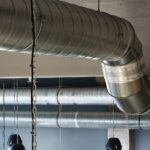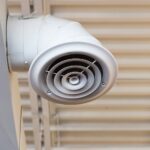Winter temperatures can pose a serious threat to your plumbing system, leading to frozen pipes and costly repairs. However, implementing effective pipe insulation methods can safeguard your home or business from these risks while simultaneously enhancing energy efficiency. As both a vital preventative measure and an investment in sustainability, pipe insulation deserves a closer look.
- Discover how different types of insulation materials like fiberglass, foam, and rubber can help tackle cold weather challenges.
- Learn practical techniques for properly applying insulation to both new and existing setups, ensuring optimal performance.
- Find out why routine maintenance and inspections are essential to preserving the integrity of your insulation system.
- Explore the dual benefits of pipe insulation, including protective measures against freezing and substantial energy savings.
By delving into this article, you’ll gain a comprehensive understanding of pipe insulation methods that not only prevent damage but also offer significant economic and environmental benefits. Equip yourself with the knowledge to keep your plumbing system resilient and energy-efficient year-round.
Understanding Pipe Insulation Methods: Prevent Freezing and Energy Loss
Pipe insulation plays a vital role in safeguarding plumbing systems from harsh cold weather. By effectively insulating pipes, you can prevent freezing, which often leads to costly pipe bursts.
Moreover, insulation enhances energy efficiency by minimizing heat loss, which is crucial for reducing energy bills, especially in residential and commercial settings. This guide will explore the diverse pipe insulation methods available and how they contribute to both protection and energy savings.
Identifying the right insulation materials is essential to ensure effective application. Each type of material offers unique benefits, making it important to match the material with the specific demands of the environment. Whether aiming to insulate for extreme cold or to reduce thermal transfer, selecting suitable pipe insulation materials is a must.
Types of Insulation Materials
A variety of materials are used for pipe insulation, each with its own set of thermal properties and benefits. Among the most common are fiberglass, foam, and rubber, each catering to different needs.
Fiberglass insulation is popular due to its high thermal resistance, making it effective in retaining heat while minimizing loss. It is cost-effective and suitable for both high and low-temperature environments, ideal for areas subjected to extreme weather conditions.
Foam insulation, noted for its ease of application, provides a versatile solution with excellent insulating properties. Foam is lightweight and flexible, making it suitable for irregularly shaped pipes and fittings.
Rubber insulation stands out for its resilience and ability to withstand moisture, which is crucial in damp environments. It offers excellent protection against condensation and mold.
Each of these materials provides specific advantages depending on your requirements. Consider the thermal properties, cost-effectiveness, and environmental suitability of these insulation options to enhance energy efficiency and prevent freezing in your plumbing system.
Applying Pipe Insulation Methods: Prevent Freezing and Energy Loss
Properly applying pipe insulation is crucial for safeguarding your plumbing system against freezing temperatures and minimizing energy loss. Whether you’re working on new construction or retrofitting an existing system, understanding the correct application techniques can make a significant difference in performance.
First, evaluate your project’s specific needs. Measure the dimensions of pipes to select the appropriate insulation thickness and type. Cut the insulation to fit precisely, ensuring there are no gaps that can allow heat to escape or cold to penetrate.
For new constructions, plan the pipe layout to facilitate easy insulation application. Use materials like fiberglass or foam, known for their high R-values, to enhance energy efficiency. Secure insulation with adhesive or tape, ensuring a snug fit along the length of the pipe.
In retrofitting projects, it’s essential to clean and dry pipes before applying insulation. This helps achieve the best adhesion and prevents potential issues like mold growth. Overlap insulation at joints and corners to maintain consistent coverage and maximize thermal protection.
Additionally, consider climate-specific strategies. In extremely cold regions, double wrapping pipes or using heating cables can provide extra protection against freezing. This attention to detail ensures your plumbing system remains functional and energy-efficient throughout the year.
Insulation Maintenance and Inspection
Regular maintenance and inspection of insulated pipes are pivotal in sustaining long-term effectiveness and ensuring your insulation system performs optimally year-round.
Begin by scheduling routine inspections, particularly before the onset of colder seasons. Check for any wear and tear, especially in areas exposed to moisture or mechanical impact. Look for signs of insulation degradation such as cracking, gaps, or mold, which can compromise performance.
Keep insulation clean and free of debris to avoid any thermal bridging issues. If you notice any damage, promptly repair or replace the affected insulation to maintain the integrity of the system.
Consider conducting an annual energy audit. This practice helps identify any unforeseen energy losses due to insulation inefficiencies, allowing you to take corrective measures promptly.
By prioritizing regular upkeep, you’ll not only extend the lifespan of your insulation but also sustain performance, ensuring both environmental and economic benefits from your well-maintained plumbing insulation system.
Benefits of Effective Pipe Insulation
Effective pipe insulation is crucial for maintaining optimal plumbing system performance and provides multiple advantages. By implementing proper insulation techniques, not only can you prevent costly pipe damage, but you can also enjoy substantial energy savings.
One of the primary benefits of effective pipe insulation is its ability to prevent pipes from freezing during cold weather. Uninsulated pipes are particularly vulnerable in unheated spaces, where temperature drops can lead to pipes bursting. Insulation acts as a protective layer, maintaining a consistent temperature within the pipes and thereby reducing the risk of freezing.
In terms of energy conservation, insulated pipes significantly minimize heat loss. Keeping hot water pipes insulated ensures that the heat energy is retained as the water travels to its destination. This means less energy is required for water reheating, translating to lower energy bills and a reduced carbon footprint.
Furthermore, well-insulated plumbing systems contribute positively to the environment. By decreasing energy usage, insulated pipes help reduce greenhouse gas emissions, supporting broader efforts toward environmental sustainability.
The economic implications are just as compelling. With efficient insulation, businesses and homeowners can have fewer maintenance costs down the line. Insulated pipes are less prone to damage, reducing the frequency of repairs and replacements. This leads to long-term savings and a reliable plumbing system.
In conclusion, effective pipe insulation is not only an investment in protecting your pipes but also a prudent choice for energy efficiency and environmental responsibility. Ensuring that your plumbing system is well-insulated can substantially enhance its durability and cost-effectiveness over time.
Frequently Asked Questions on Pipe Insulation
Why is pipe insulation important?
Pipe insulation prevents pipes from freezing and reduces energy loss, leading to cost savings and increased efficiency.
What materials are commonly used for pipe insulation?
Common materials include fiberglass, foam, and rubber due to their thermal insulation properties.
How can I ensure proper insulation installation?
Ensure there are no gaps and the insulation is securely fitted around pipes, especially in joints and bends.
How often should pipe insulation be inspected?
It’s best to inspect insulation at least once a year, preferably before winter.
What are the economic benefits of effective pipe insulation?
Proper insulation can significantly reduce heating costs and energy consumption.





